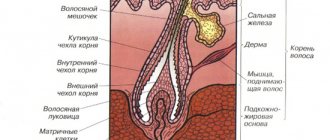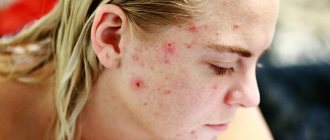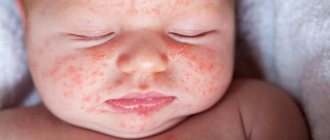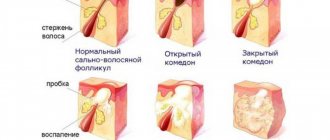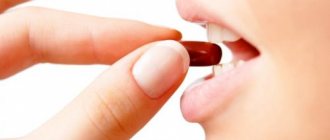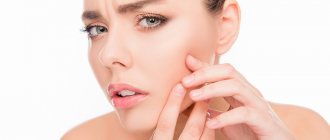“Children, drink milk and you will be healthy!” This is what we were taught from childhood by our grandmothers, great-grandmothers and great-great-grandmothers, who grew up in villages where dairy products were the basis of nutrition. Why can they play a cruel joke on a modern person - provoke the appearance of acne and excess weight? Where do you get calcium if not from milk? And how to maintain intestinal microflora, if not with the help of fermented milk products?
Why not everyone digests milk
The key word in the famous phrase about milk is “children,” since the adult body is practically not designed to absorb lactose, milk sugar. In addition, casein, a milk protein, is extremely difficult to digest.
There is a study on how milk is digested in people of different nationalities and races living in different regions and countries. 16–19% of Russians have lactase deficiency, a lack of an enzyme that allows them to break down lactose, and this is only among those examined. In simple terms, one in five or six people are milk intolerant. If after eating any dairy products your stomach hurts, you experience bloating, discomfort, and flatulence, then you suffer from lactase deficiency.
For each of us, the absorption of dairy products is an individual thing, which depends only on our ancestors. The longer a product has been consumed by any population, the higher the likelihood of its absorption. Dairy farming appeared relatively recently in Russia; it was practically undeveloped until the 19th century. By and large, we don’t have very many enzymes responsible for digesting dairy products.
It must be kept in mind that hard cheese and butter contain almost no lactose, and therefore are more easily digested by people with lactase deficiency than dairy products. If you choose to drink lactose-free milk, it will most likely be milk that has already had lactase added to make it easier to digest.
The popularity of milk and the promotion of its usefulness is just support for the manufacturer. The reason is that milk production is relatively inexpensive in terms of cost: you take a cow, connect it to the machine, milk it, curdle the milk, etc. And in most of our climate zones, no special conditions are required to raise dairy cows. The myth about the usefulness of milk arose in Soviet times, when it was necessary to feed the country, since the range of products that can be produced from it is large.
How milk changes human hormonal levels
Another reason to limit dairy products in the diet is insulin-like growth factor, which is needed for the calf to turn into a large cow in one to two years, which can reproduce further. The development of the human body and its achievement of sexual maturity occurs at a completely different time.
Insulin-like growth factor is a hormone found in absolutely all dairy products. How does he get there? It’s very simple: dairy cows are stimulated with recombinant bovine growth hormone to increase milk yield. The use of growth hormone for cows can increase the content of insulin-like growth factor in milk and, as a result, change human hormonal levels.
That’s why, when you think about your grandmother or great-grandmother, who lived in the village all her life and drank milk from the cow, lived to be 85 years old - “and nothing”, remember that comparing her diet with our consumption of industrially produced milk is at least pointless and dangerous.
Insulin-like growth factor also contributes to acne. It provokes an excess of sebum, comedones appear, and under certain conditions (changes in skin microflora and external factors) and acne. Therefore, the first recommendation when treating acne is to remove milk completely.
What other foods affect acne*?
Acne* can appear not only from milk, but also from other products. Therefore, it is not advisable to consume 42:
- fast food, snacks, chips;
- sweets;
- coffee;
- baked goods and baked goods;
- products made from whole grain flour;
- sausage, smoked meats and various semi-finished products;
- carbonated drinks, alcohol.
Peanuts and spinach can also be harmful to the skin by increasing sebum production. This also applies to fried, salty, spicy foods. Experts recommend avoiding foods that contain large amounts of amino acids and refined carbohydrates, which increase blood sugar levels and trigger the release of insulin. 42
Since milk affects acne* and worsens skin condition more than other products, it is better to avoid it. A dairy-free diet will reduce the likelihood of inflammation, but will not completely eliminate acne. Since the level of hormones, heredity, and improper hygiene affect the development of acne no less than nutrition. 42
Where can you get calcium if not from milk?
Milk advocates make the following argument: milk contains a lot of calcium, which is necessary for teeth and bones. At the same time, Switzerland leads the world in statistics on the prevalence of osteoporosis; consumption of milk and dairy products is also in first place there. Think about it: if everything was very rosy with milk and calcium, would the Swiss have osteoporosis?
The truth is that calcium is not only found in milk, and it does not contain much calcium compared to other foods. And increased milk consumption, on the contrary, promotes calcium leaching.
I will provide information about sources of calcium (figures vary from source to source).
| Product | Calcium content in 100 g of product, mg |
| Poppy | 1460 |
| Sesame | 783 |
| Nettle | 713 |
| Cheeses | 500–1000 |
| Sunflower seeds | 367 |
| Almond | 252 |
| Nutmeg | 250 |
| Pistachios | 248 |
| Parsley | 245 |
| Hazelnut | 226 |
| Dill | 223 |
| Amaranth seeds | 214 |
| Watercress | 214 |
| Kale | 212 |
| Dry soybeans | 201 |
| Broccoli | 180 |
| Sheep milk | 170 |
| Hazelnut | 170 |
| Dried apricots | 166 |
| Beans | 150 |
| Spinach | 136 |
| Persimmon | 127 |
| Cow's milk | 120 |
| Black bread | 100 |
| Leek | 83 |
| Cottage cheese | 80 |
| Lentils | 77 |
| Orange | 70 |
| Celery | 63 |
| Wheat | 62 |
| Brussels sprouts | 42 |
| Fish | 30-90 |
Bottom line: You don't have to eat dairy products to get enough calcium, but you can. It is important to make your diet varied.
To absorb calcium , vitamin D3 is necessary, which is found not only in animal sources (butter, cheese, egg yolk, fish oil, caviar), but also in plant sources (alfalfa, horsetail, nettle, parsley, mushrooms, sunflower seeds). In addition, sunlight promotes the production of this vitamin in the body. And of course, calcium absorption will be optimal if you take additional vitamin D3.
In addition to vitamin D, magnesium is needed. When the concentration of magnesium in the blood drops, the kidneys restore balance by retaining less calcium. When magnesium concentrations increase, the kidneys excrete less calcium. For this reason, the body primarily needs magnesium and vitamin B6, which helps retain magnesium in the cell.
Where can you get beneficial bacteria from if you don’t eat fermented milk products?
When they talk about maintaining healthy intestinal microflora, they usually mention probiotics and prebiotics - and practically equate them with dairy products. Is it so?
Probiotics are live microorganisms, intestinal bacteria that promote the production of digestive juices and natural enzymes and improve digestion. They protect the intestinal mucosa and suppress harmful microorganisms.
Indeed, probiotics include fermented dairy products - kefir, yogurt, soft cheeses, acidophilus milk, buttermilk, ayran, matsoni, etc. - but not only. Here are other sources of probiotics:
- sauerkraut (you can ferment it without sugar and salt) - rich in lacto- and bifidobacteria, vitamins A, B1, B2, C and microelements (iron, calcium, phosphorus and magnesium), improves intestinal microflora, restores the normal acid-base balance of the small intestine and promotes better absorption of nutrients;
- pickled cucumbers, tomatoes, pickled apples;
- Miso soup is a fermented product made from soybeans, containing about 160 types of pure cultures, vitamins, minerals, amino acids and other substances necessary for health. Other soy products - tempeh, soy sauce (good, Japanese or Korean!), tofu;
- sourdough bread (contains lactobacilli, which benefit digestion);
- kombucha (kambucha).
Prebiotics are non-digestible food ingredients, low molecular weight carbohydrates that help improve health by stimulating the growth and metabolic activity of groups of bacteria that live in the large intestine; helping to absorb certain microelements (calcium and magnesium), reducing the formation of gases; fighting constipation and intestinal inflammation.
Prebiotics are found in asparagus, bananas, oatmeal, honey, legumes, artichokes, onions, leeks, and garlic.
Acne and diet
Dermatologists at the Telos Beauty Prof expert cosmetology clinic have been dealing with the correction of all skin problems for more than 12 years:
- Acne treatment
- Acne Treatment
- Acne treatment
- Treatment and correction of post-acne manifestations
Skin treatment for acne and acne involves a mandatory diet and effective therapeutic procedures in the clinic, under the full supervision of a dermatologist and nutritionist. The combined use of approximate techniques and injectable drugs allows our doctors to achieve fantastic results. Many of our clients completely change their lives, acquiring a young and clean face!
ACNE TREATMENT IN TELOS BEAUTY PROF
- Skin cleansing procedures. Physical removal of comedones provides rapid clinical improvement. Our doctors open closed comedones with a thin needle and extract the contents with a special spoon. Facial cleansing that uses any tools is called mechanical. If the comedone is small in size, the contents are removed by manual cleaning, that is, by gentle pressure near the site of inflammation.
- BBL technology (BBL) treatment at the gene level. The procedure is very comfortable, without rehabilitation and most effective. You will see visible results after the first procedure, and by following the doctor’s recommendations and completing a course of procedures, you can get rid of ACNE forever! Our doctors believe that often treating ACNE using BBL technology is an excellent alternative to drugs and expensive procedures.
Acne is a serious aesthetic defect that is almost impossible to hide with cosmetics. Numerous creams, ointments and lotions do not cope with the problem because they act only superficially. According to most doctors, acne treatment should be comprehensive and aimed, first of all, at normalizing hormonal levels and metabolic processes in the body. Following a diet does not completely solve the problem of acne, but it significantly speeds up treatment.
Useful products for acne
The basis of the diet for acne should be the following products:
- Probiotics. One of the common causes of acne is intestinal dysbiosis. Foods rich in probiotics help restore normal microflora. These include natural yogurt, sauerkraut, kvass, apple cider vinegar, pickled cucumbers, and some types of cheeses.
- Seafood. Fish and seafood are rich in healthy unsaturated Omega-3 fatty acids. These components cleanse the vascular walls of cholesterol plaques, improve blood circulation and have an anti-inflammatory effect. The combination of these effects reduces the intensity of the rash.
- Vegetables. Green vegetables and herbs are rich in the provitamin beta-carotene. This substance reduces skin oiliness, has an antioxidant effect, and reduces the intensity of inflammation.
- Products containing zinc. Zinc is a trace element that suppresses the formation of sebum. Eating foods rich in zinc reduces the appearance of acne. Such products include liver, tongue, heart and other meat by-products. Pine nuts, watermelon and pumpkin seeds also help replenish zinc deficiency.
- Green tea. This drink is rich in antioxidants and has a positive effect on metabolic processes in the body.
Diet for acne should be varied and balanced. This helps normalize the digestive system and speeds up metabolism.
Prohibited foods for acne
There are products that increase the severity of acne. It is better to avoid them completely. This group includes:
- Products containing simple carbohydrates - white bread, pastries, sugar, sweet carbonated drinks. Large glucose consumption increases insulin synthesis. This hormone in turn stimulates the production of testosterone, which causes acne.
- Dairy products - milk, cheese, cottage cheese, kefir. Due to the content of animal growth hormone, frequent consumption of these ingredients has a negative effect on hormonal levels.
- Trans fats – fast food, mayonnaise, butter, crackers. Trans fats can change the composition of sebum, promoting its accumulation in tissues.
The optimal diet for acne is following the principles of a nutritious healthy diet. A consultation with a Telos Beauty Prof dermatologist will help you understand the causes of acne on the face, as well as treatment methods in order to have clean and well-groomed skin!

